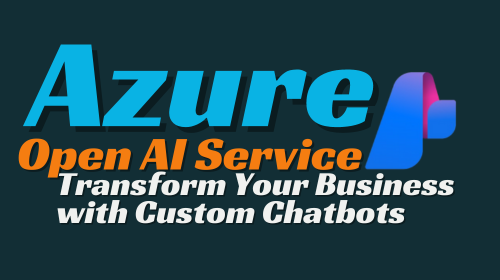- Home
- Cloud Architecture Design
- Harnessing the Power of Azure OpenAI 🤖
Harnessing the Power of Azure OpenAI 🤖
Transform Your Business with a Custom Chatbot: Harnessing the Power of Azure OpenAI
What is Azure OpenAI Service? 🤖
The Azure OpenAI Service is a cloud-based service provided by Microsoft that allows users to access and use powerful AI models developed by OpenAI. These models include:
- GPT-4o and GPT-4o Turbo: The latest models with enhanced capabilities, including audio generation and real-time interactions
- GPT-4 and GPT-3.5: Advanced language models that can understand and generate human-like text. (Few other LLM’s GPT-4o and GPT-4 Turbo · GPT-4 · GPT-4 and GPT-4 Turbo models · GPT-3.5)
- Embeddings Models: Used for tasks that involve understanding and searching large amounts of text based on meaning.
Key Features:
- Content Generation: Create articles, stories, or any text-based content.
- Summarization: Quickly summarize long documents.
- Image Understanding: (Specific to models like GPT-4 with Vision) Interpret and analyze images.
- Semantic Search: Find relevant information based on meaning, not just keywords.
- Natural Language to Code: Convert spoken or written instructions into programming code.
You can access these capabilities via:
- REST APIs: Integrate the models into your applications using standard web protocols.
- Python SDK: Use Python programming language to interact with the service.
- Azure OpenAI Studio: A user-friendly web interface to explore and use the AI models.
In essence, Azure OpenAI Service makes it easy to bring advanced AI capabilities into your applications.
Let’s look at the Azure OpenAI chat baseline architecture in an Azure landing zone.

Overview of Azure OpenAI chat baseline architecture
In this architecture, there’s a clear division of responsibilities between the platform team and the workload team. This division is known as subscription democratization. Understanding who controls which parts helps in managing and deploying resources effectively.
Workload Team-Owned Resources
The workload team is primarily responsible for managing the following components. These resources are critical for running and maintaining the application and AI services:
🤖 Azure OpenAI
- This managed service provides access to Azure’s powerful language models, like GPT-4 and GPT-3.5 Turbo, through REST APIs. It enables the integration of advanced AI capabilities into applications.
🧠 Azure Machine Learning
- Used for developing and deploying the logic behind prompt flows. These are sequences of actions and responses used in chat applications to handle user interactions intelligently.
🔗 Managed Online Endpoints
- These are PaaS endpoints that host the chat UI application. They facilitate the execution of prompt flows managed by Azure Machine Learning.
🌐 Azure App Service
- Hosts the example web application for the chat UI. It can also host containerized prompt flows, providing flexibility in how the environment is controlled. This service is distributed across three instances in different Azure zones for resilience and scalability.
🔍 AI Search
- This service is used to retrieve relevant, indexed data in response to user queries, enhancing the functionality of chat applications by providing contextually appropriate information.
💾 Azure Storage
- Stores prompt flow source files and other data necessary for developing and maintaining the prompt flows.
📦 Azure Container Registry
- A repository to store container images of packaged prompt flows, facilitating easier deployment and scaling.
🛡️ Azure Application Gateway
- Acts as a reverse proxy, routing user requests to the chat UI hosted on Azure App Service. It includes a web application firewall to protect against malicious traffic.
🔐 Key Vault
- Securely stores application secrets and certificates, crucial for maintaining security and integrity in the system.
📊 Azure Monitor, Logs, and Application Insights
- These tools collect, store, and visualize observability data, helping in monitoring the performance and health of the application.
📜 Azure Policy
- Applied to ensure governance, security, and control across the workload, helping maintain compliance and operational standards at scale.
🔌 Spoke Virtual Network Subnets & NSGs
- Used for segmenting the network and controlling traffic flow within the application environment, enhancing security and manageability.
🔒 Private Endpoints
- Secure connections to PaaS solutions, ensuring that traffic between components remains within the Azure network and is not exposed to the public internet.
Platform Team-Owned Resources
These components are managed by the platform team, ensuring a secure, scalable, and standardized environment that the workload team can rely on:
🔥 Azure Firewall
- Located in the hub network, it inspects, routes, and restricts egress traffic, managing communications to the internet or other networks securely. This component is new in this architecture, offering centralized traffic control.
🛡️ Azure Bastion
- Provides secure access to workload components and Azure AI Studio components within the hub network. In previous architectures, this was managed by the workload team.
🌐 Spoke Virtual Network
- The deployment zone for the workload, providing a dedicated space within the larger network structure. This was previously owned by the workload team but is now managed by the platform team for better integration and control.
🚦 User-Defined Routes (UDRs)
- These routes direct traffic through the hub network, ensuring that all communications follow the intended secure path. This feature is newly added in this architecture.
📜 Azure Policy-Based Governance
- Policies and constraints are applied at a higher level (management group) or directly to the workload’s subscription to enforce rules and ensure compliance. This governance structure is newly implemented in this architecture.
📡 Azure Private DNS Zones
- Host A records for private endpoints, enabling internal DNS resolution. This responsibility has shifted to the platform team, providing centralized management.
🧭 DNS Resolution Service
- This service handles DNS requests within the spoke networks, typically managed by Azure Firewall as a DNS proxy or Azure DNS Private Resolver. It ensures that DNS queries for private endpoints are correctly resolved.
🛡️ Azure DDoS Protection
- Protects public IP addresses from distributed denial-of-service (DDoS) attacks, ensuring the availability and security of the application. Previously, the workload team handled this, but now it’s a centralized service.
In this architecture, the platform team provides a secure and scalable foundation, while the workload team focuses on the specific application components and AI services. This clear division allows for efficient management and deployment of resources.
Use Cases for Your Custom Chatbot 🤖
👩💼 HR Assistant
- Objective: Streamline employee support by providing instant answers to common HR questions.
- Features: Access and explain company policies 📋, check leave balances 🏖️, provide information on benefits 🏥, and guide employees through HR procedures 📝.
- Example Interaction:
- User: “What are the steps to apply for maternity leave?”
- Chatbot: “To apply for maternity leave, you need to submit a leave request form to HR and provide a medical certificate. You can find the form [here].”
💻 IT Support
- Objective: Reduce the burden on IT support staff by automating responses to frequent technical queries.
- Features: Assist with password resets 🔑, troubleshoot connectivity issues 🌐, and guide through software installations 📥.
- Example Interaction:
- User: “I forgot my network password. How can I reset it?”
- Chatbot: “You can reset your network password by visiting the [password reset page] or following these steps: [detailed instructions].”
🛍️ Customer Service
- Objective: Enhance customer interactions by providing quick responses to common inquiries and issues.
- Features: Answer questions about products 🛒, order status 📦, and return policies 🔄. Offer troubleshooting steps for common problems 🛠️.
- Example Interaction:
- User: “How do I track my order?”
- Chatbot: “You can track your order by entering your order ID on our [tracking page]. If you need assistance, I can help you find it.”
📈 Sales and Marketing
- Objective: Engage potential customers and provide detailed information about products and services.
- Features: Provide product details 📄, promotions 🎉, and event information 🗓️. Capture lead information 📝 and schedule follow-ups 📅.
- Example Interaction:
- User: “Do you have any promotions on your software products?”
- Chatbot: “Yes, we have a 20% discount on our software products this month. Would you like to learn more or make a purchase?”
Building a custom chatbot with Azure OpenAI can transform how your company interacts with customers and employees. By following the structured approach provided by the Azure OpenAI Baseline Landing Zone, you can ensure that your chatbot is secure 🔐, scalable 🌐, and efficient ⚡. From HR support to IT assistance and customer service, a well-designed chatbot can significantly enhance your business operations.

